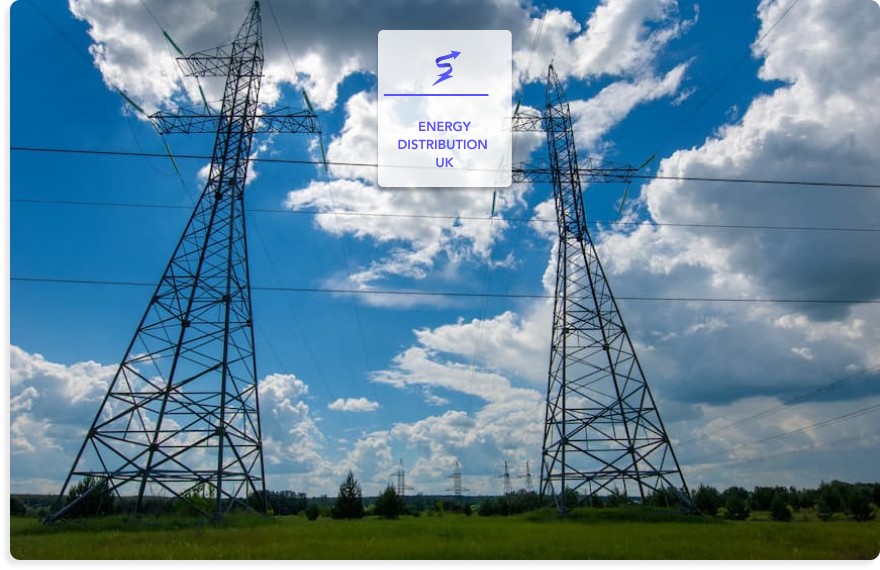Energy Distribution in the UK: Who is your DNO for gas and electricity?

Are you ready for a Green New Deal? We are!
Our commitment to green energy is matched only by that of the suppliers we compare. Choose and switch to the one that best fits your needs here.
Notice
Many of us await the winter weather with a feeling of dread. Sure, all the snow, ice and frost look pretty. But for many of us (especially those of a certain age), extremely cold weather can exacerbate a range of health issues – not to mention sending our heating bills sky high. But if you’re of pensionable age, you may find that you’re entitled to a Winter Fuel Payment from the government.
Last updated: November 2022

How does energy distribution work?
The concept is pretty simple: a bunch of cables connecting the National Grid in order to provide energy to homes. But how does energy distribution really work?
Electricity distribution
In order for electricity to be distributed around the UK, there needs to be some linkage between the high voltage grid to individual users. Therefore, there is a middleman who is in charge of making sure that the energy is carried over: Distribution Network Operators (DNOs). There are 14 DNOs that operate in the UK, each one managing a particular region. These are:
- Electricity North West Limited
- Northern Powergrid (Northeast) Limited
- Northern Powergrid (Yorkshire) plc
- Scottish Hydro Electric Power Distribution plc
- Southern Electric Power Distribution plc
- SP Distribution Ltd
- SP Manweb plc
- London Power Networks plc
- South Eastern Power Networks plc
- Eastern Power Networks plc
- Western Power Distribution (East Midlands) plc
- Western Power Distribution (West Midlands) plc
- Western Power Distribution (South West) plc
- Western Power Distribution (South Wales) plc
All of these DNOs are then managed by 6 separate DNO groups, which also operate on a regional basis. These are:
- Northern Powergrid
- Electricity North West Limited
- Scottish and Southern Energy
- ScottishPower Energy Networks
- UK Power Networks
- Western Power Distribution
A DNO exists to ensure that prices are regulated across the grid. A DNO must have a license that means that they can’t overcharge for the electricity they distribute.
Your DNO is who you should ring if you are experiencing a power cut, for example, in which case you should ring 105.
Gas
Energy distribution on the gas side is a bit different. Like Distribution Network Operators for electricity, gas is distributed through Gas Distribution Networks (GDNs). There are 8 GDNs, which are managed by 4 companies. They distribute gas regionally.
The GDNs in the UK are:
- East of England
- North London
- North West
- West Midlands
- Northern
- Scotland
- Southern
- Wales and West
These GDNs are managed by:
Like DNOs, GDNs exist in order to protect consumers from being overcharged, as well as to manage gas supply.
What is a distribution line?
Power travels from power sources to residential, commercial and industrial customers. During this, the electricity goes through transmission lines and distribution lines. From one type of line to another, the electricity goes through transformers which modify the voltage in order to optimize the energy lost through electromagnetic fields.
In order for power to be transported from energy sources to domestic or commercial customers, it must go through lines. There are two types of lines that it is passed through: distribution lines and transmission lines.

Looking for the best energy deals?
Free Service
Request a callback from our experts at Switch Plan to help you find
the best energy contract .
More info
By definition, a distribution line is a line or system that carries energy from the point of transmission to the consumer. Distribution lines are typically for short distances, whereas transmission lines tend to cover larger distances. This is because they have a higher voltage, so can transport more electricity. Distribution lines, however, have a much lower voltage, so they transport electricity over shorter distances.
If the electricity needs to be passed from one line to another, the electricity has to pass through a transformer which changes the voltage, either increasing it or decreasing it.
Why is electricity distributed at high voltages?
Electricity is often generated at high voltages because it is far more efficient. This is because the higher the voltage, often the lower the friction of the movement of electricity as there is less current. This means that less electricity is lost as the current passes through the line, making it much more efficient.
Energy Distribution in the House
Once energy gets to my house, how does it move around?
The last step of electricity distribution is in fact its distribution around your home. It gets quite complicated, but let’s keep it simple.
Inside your home there are a number of service wires which are connected to your distribution transformer. What’s a distribution transformer? In short, it’s a transformer that supplies the final leg of electricity in the whole distribution system. The service wires in your home transports this electricity from the distribution transformer to your home’s power meter, which can usually be found outside of the home. What’s the purpose of this meter? Well, it measures and controls the electricity that enters your home from the transformer.
To sum up, your home’s circuits make up your electricity system and provide power to all the parts of your home. Your home has breakers that will control the supply of electricity to ensure that the right and safe amount of voltage enters your home at any one time.
Want to read more related articles? Check out the following guides:
Looking for a better energy deal?Leave your phone number to request a call back from us!
Free Service
FAQ
Do I need to contact my DNO if I am moving?
Any moving process can be tedious, which is why we suggest you call us and let us aid in the tricky things such as switching your energy plans. In most cases when your energy plan is switched with your supplier the DNO's is made aware and will stop supply energy to your old residence. The same applies to moving into a new residence, your energy supplier contacts the regional DNO to ensure energy is being supplied to your new home in your name.
Do different DNO's have different prices?
The answer is both yes and no. DNO's do not charge you directly, that is what your tariff plans are for, but instead the DNO's of different regions can have different price caps and as a result certain areas have a higher energy cost. For example, some parts of Scotland are difficult to supply energy with because of their remote location, so these areas have among the highest energy costs in the UK.
What do I do if my power is cut?
As mentioned above, the first thing that you can do is ring 105. They will be able to listen to the situation and provide you with some helpful information. Additionally it may be worth reaching out to your energy supplier in order to find out how it can impact you and your energy bill.
Updated on 29 Jan, 2024
William Dautel
UK Content Manager
William is a content marketing specialist. After 3 years writing brand strategies he joined papernest to help create the best content to help people handle and save on their utilities.
William is a content marketing specialist. After 3 years writing brand strategies he joined papernest to help create the best content to help people handle and save on their utilities.
Comments